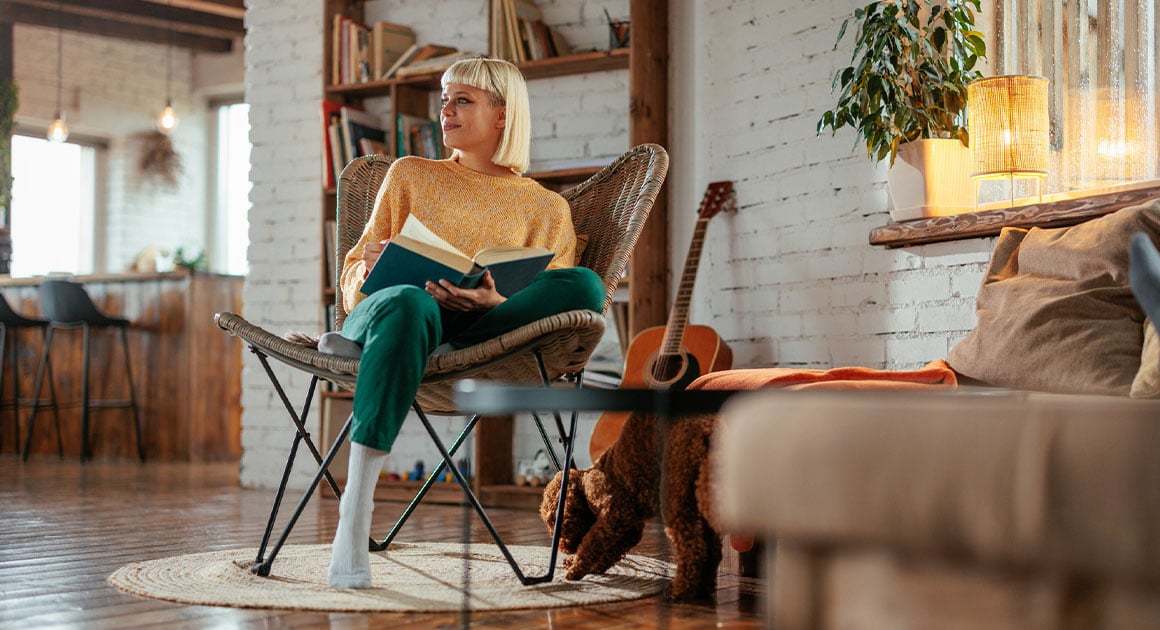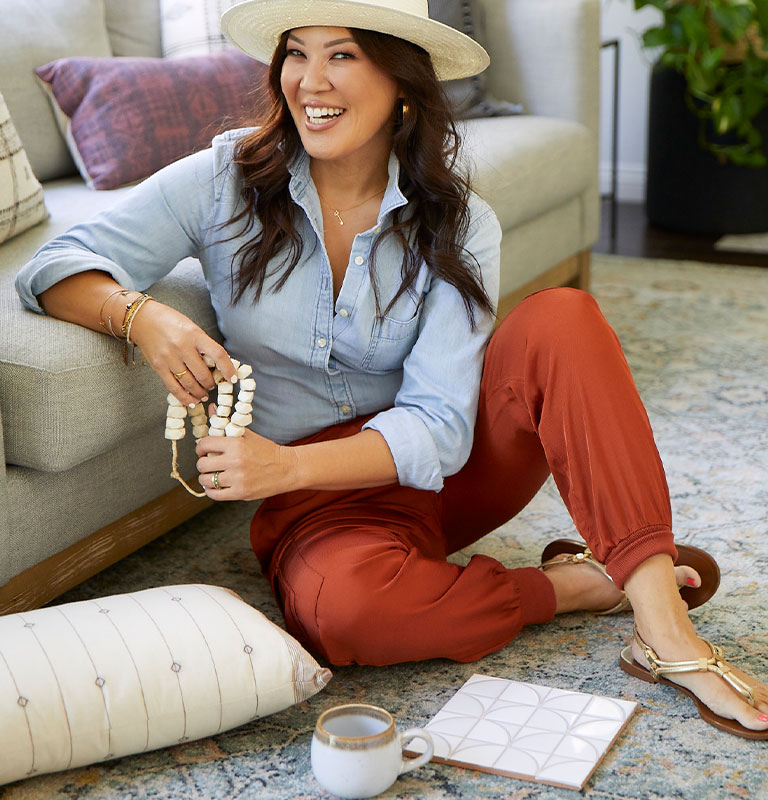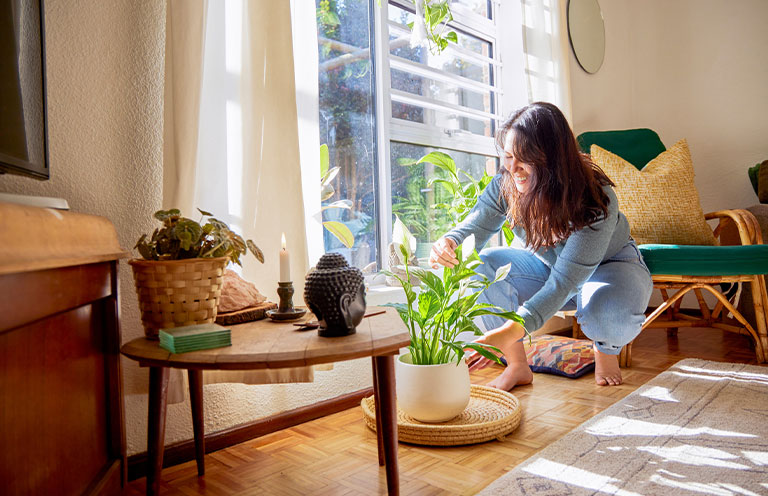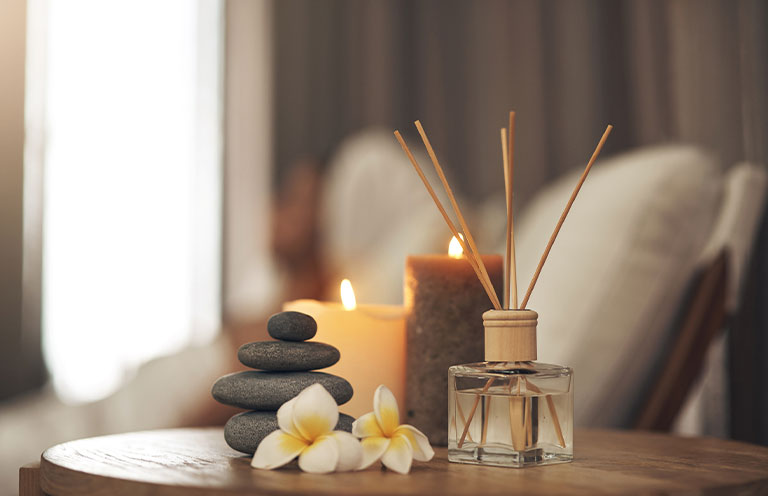How to Create Your Very Own Zen Den
A therapist-turned-designer shares tips on how to carve out a personal sanctuary—no major renovation (or square footage) required


With the world seemingly spinning faster than ever—work deadlines, endless notifications, and general chaos—it's no wonder we're all craving a little peace and quiet.
Enter the Zen den—your own personal sanctuary at home, whether it's an entire room or a cozy corner.
“Creating a personal sanctuary at home isn't a luxury anymore; it's essential,” says therapist-turned-designer Anita Yokota. The bestselling author of Home Therapy blends psychology, neuroscience, and interior design to help people transform their emotional well-being through thoughtfully designed spaces.

Why a Zen den matters
“When you carve out a Zen den, even if it's just a quiet corner, you're sending a message to your nervous system: This is a safe place to land,” Yokota explains. “It gives your mind and body permission to slow down, process, and reset.”
In today's overstimulated world, that kind of intentional stillness is rare and deeply healing. Your sanctuary isn't just about aesthetics; it's about creating a buffer against the noise.
Think you need a big budget or an entire room to create a personalized Zen den? You don’t.
“You just need a corner and the courage to prioritize yourself,” Yokota says. “Even a few feet of space, styled with care, can become a powerful place to recharge.”

Getting started (even in small spaces)
If you've never created a dedicated space, Yokota recommends starting with a simple question: How do you want to feel in the space: calm, restored, or inspired? That feeling becomes your design North Star.
Next, pick a small area—a corner, window ledge, or favorite chair—and clear away anything that doesn't align with your desired feeling. “Add one item that brings you comfort—a soft throw, a candle, a journal,” Yokota advises.
“Creating a sanctuary starts with creating boundaries for peace,” she adds. Even the tiniest spot can become a powerful haven when designed with intention.

Designing with purpose
Forget aspiring for Pinterest perfection. Yokota champions the “psychology of intention” in design, saying, “Intention is about making choices that reflect what you need, not just what looks good.”
She encourages asking yourself: Is this supporting my rest, creativity, and healing? For example, if you tend to overthink at night, place a calming scent near your bed to help relax the mind. If focus is your struggle, consider adding more natural light; exposure to daylight helps regulate your circadian rhythm and supports mental clarity.
“The key is to make your space work for you, not just look aesthetically pretty,” Yokota says.
Simple tips for instant calm
Creating calm can start with small, immediate changes. Yokota suggests starting with what she calls the “nervous system check”—a mindful assessment of how your environment affects your stress levels.
- Begin by decluttering just one area of your space. “A clear nightstand or coffee table can reset the tone of an entire room,” she says.
- Add a soft throw or textured pillow in a soothing tone.
- Swap out harsh overhead lights for a warm bulb in a table lamp.
- Don't underestimate the power of scent. "Lighting a candle or using essential oils instantly signals the brain to slow down,” Yokota explains.
These small changes can transform your space—and your state of mind.

Tapping the sensory palette
“Color, lighting, and texture are the emotional language of your home,” Yokota explains. To create a sanctuary vibe, she recommends soft greens, muted blues, and warm neutrals.
Lighting should be layered, with overhead lights off and softer sources such as table lamps and dimmers taking center stage. “Think candlelight, not floodlight,” she advises.
Textures matter, too. Linen sheets, a velvet pillow, or a chunky knit throw can all contribute to a feeling of comfort.
“When your space touches you back with warmth and softness, your whole body exhales,” she says. “Sanctuary isn't about perfection; it's about how your space makes you feel.”
Permission to prioritize peace
Creating a Zen den is ultimately about giving yourself permission to pause and breathe. Whether you have a whole room or just a sliver of space, you deserve a peaceful place. Your sanctuary isn't selfish; rather, it's necessary for your wellbeing.
